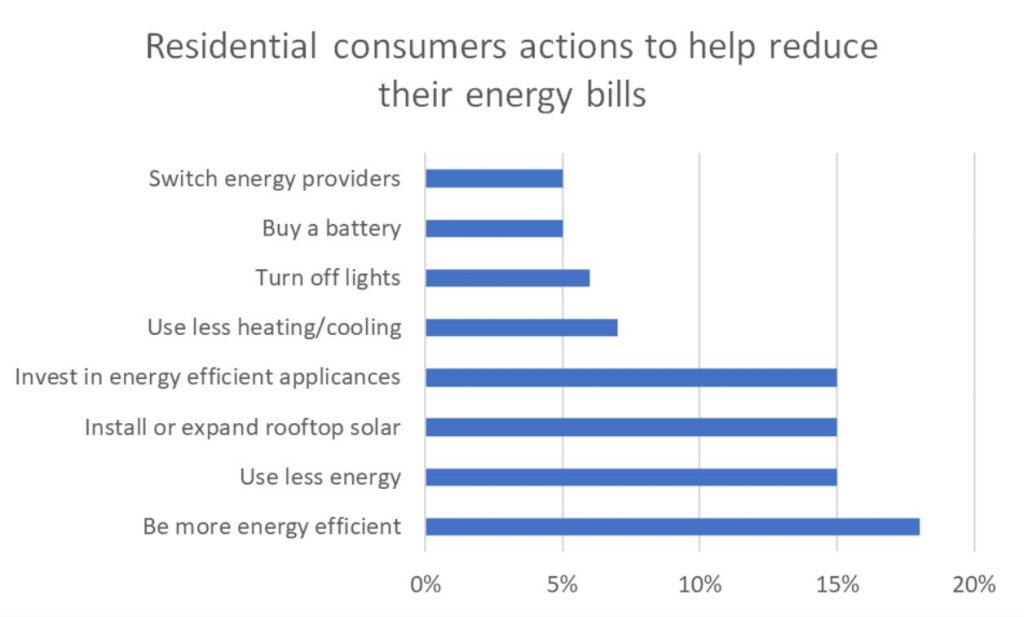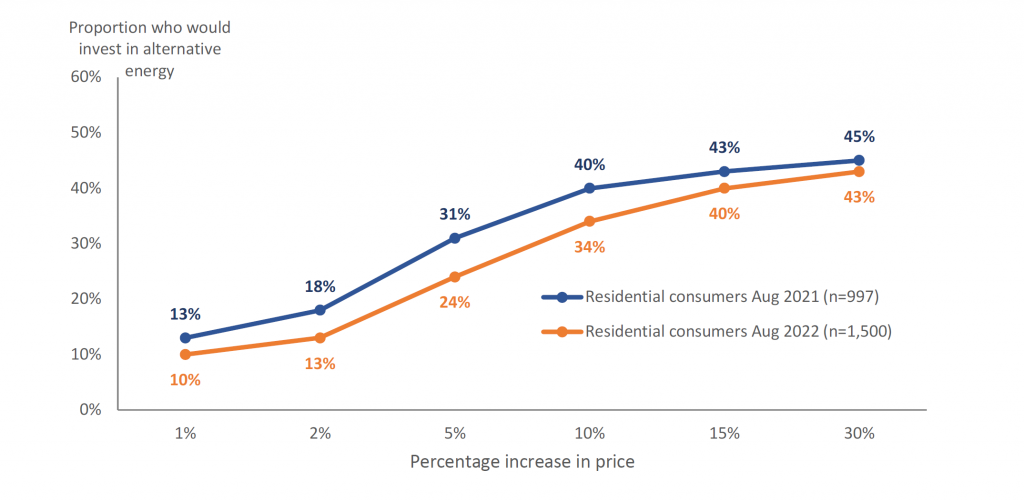You don’t need an economics degree right now to know that things are getting more expensive – you just need a set of eyes and a bank account. But observing something is not the same thing as understanding it.
Australians are suffering under high energy prices and across-the-board increases to their cost of living and many of them are pretty unhappy about it.
But beyond that, what can consumer voices tell us about these Australians and their experiences? And how might this information help create an energy system that better meets the needs of all consumers?
The Australian Energy Regulator is currently conducting a review into the way inflation is treated in its regulatory regime, as well as its usual processes of determining the Rate of Return – the amount that energy network businesses can recover and which forms a large component of the bills consumers pay.
The Consumer Reference Group (CRG), whose role it is to represent the interests of consumers in these processes, obtained grants funding from Energy Consumers Australia to survey 2500 energy consumers and find out what energy price increases mean for them. This work means the voices and concerns of consumers will be better represented in these important processes. The full report can be accessed here (PDF, 1,007.90KB).
Since April, electricity bills have risen by $300 for households and $1500 for small businesses. While we might assume that people are consequently adapting their energy choices and actions, behavioural economics warns us that consumers are not always predictable in how they respond. This is also confirmed in ECA’s most recent consumers’ behaviour survey.
The CRG found that many consumers are financially stressed when it comes to energy and are already taking steps – sometimes drastic in nature (like living in the dark) – to take control of their energy use. With cost-of-living pressures and inflation set to keep climbing, these insights are essential for decision makers and industry to understand before determining energy policies and support.
1. Consumers are already feeling the pinch and are worried about paying their energy bills now and in the future.
Energy affordability is not just a problem for a marginalised minority, it is a mainstream issue, experienced by a great many Australians. According to the CRG research, more than a quarter (28%) of people struggled to afford their energy bills in the past 12 months.
That number looks set to rise with 37% of respondents anticipating difficulties in paying their bill during the next few years. Many people are therefore at risk of energy poverty as households struggle to afford their basic electricity needs.
2. Consumers are actively taking steps to control their energy use in response to rising prices.
The report shows concern around affordability extends beyond those who have trouble paying their bills. Households across the economic spectrum are making efforts to reduce their energy costs – regardless of whether they are facing difficulties paying their bills.
The CRG report found that almost three quarters of people (73%) have taken action to reduce their bills over the last few years, with those who are financially stressed even more likely to act. The graph below shows the most popular actions that residential consumers are taking to help reduce their energy bills, with being more energy efficient (18%) leading the charge.

As energy use is front of mind, and people are showing clear interest in self-directed action to save on their bills, now is the perfect time to help consumers make informed decisions.
Bill savings are front-of-mind when it comes to introducing new energy technologies and energy efficiency measures to a larger number of Australians but they are not the only positive. Such measures help make our homes and lives more comfortable and healthier. And with 42.4% of domestic emissions coming from our households they help reduce individual carbon footprints and are necessary for the nation to meet its net zero commitments too.
3. The type of action people will take is changing in response to increasing costs.
According to the CRG research, people are less likely to invest in new energy technologies (e.g. solar panels or energy efficient appliances) compared to the same time last year. However, as prices start to increase, increasing proportions of consumers indicate that they would invest to reduce their energy use – as displayed in the graph below.

As households grapple with reduced budgets, their ability to invest in more energy efficient appliances or alternative energy sources decreases. Instead, the options that consumers perceive they have left and that remain financially viable are, according to the survey, to “do nothing” or are less intensive, such as using less energy.
Our Energy Consumer Behaviour Survey reveals a similar trend. While the number of people ‘considering’ rooftop solar, batteries and EVs has increased during the affordability crisis the number planning to buy in the next 12 months remains static and the number who have purchased in the past year is either unchanged or has slightly declined.
4. Rising energy costs are driving some people to take drastic action to reduce their energy bills.
The research also revealed that some households are at the point of despair and are taking extreme action to decrease their energy use and minimise costs. Consumers reported drastic actions such as, “Cut back on heating and… freeze to death,” and “Use no heating, no lights, and shower every second day.” These extreme measures are very concerning and show that many people don’t have access to affordable energy, impacting their ability to live comfortably, safely, and securely or work productively.
5. The cost of energy is more important for households than having a reliable supply.
When asked to trade-off in importance the cost of energy vs reliable supply, residential consumers consistently chose price – 49% favoured price compared to 27% for reliability. The number favouring price has increased compared to last year. This again shows that affordability concerns are front of mind for consumers and that is driving behaviour change, priorities, and decision-making.

While this split is not as pronounced for commercial consumers (45% favouring price compared to 39% for reliability), commercial customers are still more concerned about price as compared to last year and are more likely to trade off a highly reliable supply for affordable energy.
This report is a warning that many customers are highly cost sensitive, and are willing to prioritise cost concerns above all else due to increasing pressure to pay their energy bills. This means that some people are taking drastic actions to save money, potentially with serious consequences.
The picture revealed is of consumers being highly motivated to act, provided it is within their means, but facing significant barriers to do so. Chief among these are economic constraints and the lack of appropriate information to make the best decisions. This is also backed up by research from our June Energy Consumer Sentiment Survey. It told us that only half of Australians feel they have access to the tools and information they need to make decisions about energy products and services to manage their energy use and costs.
This presents us with a great opportunity – many consumers are willing, and are already acting, to take control of their energy use. The question is – are people taking the right actions?
Some consumers are already on the right track as they begin the process of electrification or being more energy efficient. We must ensure that these people feel supported and equipped as they make decisions about what kind of energy and appliances they are using and how their behaviours can change.
But for others, we must do better than people turning off their lights or freezing during the depths of winter. With predictions that energy prices will remain high for years to come, it’s important that all in the system play their part in assisting consumers to find sustainable solutions, making effective choices that balance their economic and lifestyle needs. The only way that this transformation will be truly successful is if everyone is brought along in the process and supported along the way.

